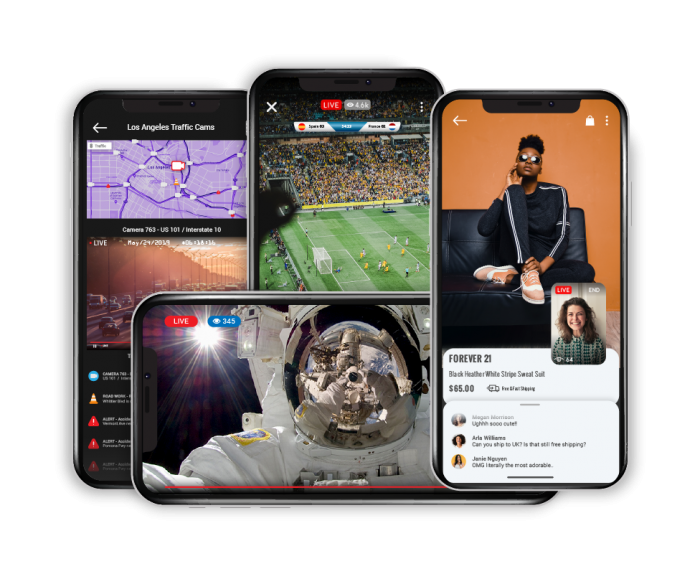The Future of Video Technology 2025

Download our report, The Future of Video Technology
Imagine starting your day by checking a video-enabled baby monitor, participating in virtual meetings at work, and ending your evening with your favorite streaming service or chatting with family on FaceTime. Sound familiar? That’s because the future of video has seamlessly woven itself into almost every aspect of our daily lives, reshaping how we work, relax, shop, and connect with others.
In our recently published whitepaper, “The Future of Video Technology“, we explore how the explosive growth of video technology is set to evolve in the coming years.
Video: A Universal Powerhouse
From consumer electronics and social media to mission critical use cases like telesurgery, rocket launches, hostage negotiations, ocean exploration, and live sports, video technology touches nearly every corner of our lives. This ubiquity stems from advancements in high-speed internet like 5G, powerful mobile devices capable of stunning 8K video capture, and AI-driven applications.
Big Trends Shaping Video’s Future
Three key trends stand out:
1. Limitless Streaming Applications
Businesses and consumers alike now depend on seamless video interactions. Healthcare providers use high-definition video for telehealth consultations and even complex surgeries performed remotely. Meanwhile, platforms like TikTok, Instagram, and Amazon leverage shoppable videos to significantly boost consumer engagement, proving video’s potential to revolutionize e-commerce.
2. Personalized and Relevant Content
Today’s consumers expect highly personalized video experiences, whether shopping, entertainment, or professional interactions. Personalized shoppable videos alone have seen up to a 30% increase in consumer conversion rates, proving that personalization isn’t just desired—it’s essential.

3. Video Anywhere, Anytime
Thanks to the proliferation of mobile and IoT devices and the expansion of 5G networks, streaming video is accessible everywhere, at any time. Innovative tools like 360-degree cameras and AR/VR applications enhance viewer experiences, blurring the line between digital content and real-world interaction.
Critical Technologies Driving Innovation
Our report identifies several key technologies facilitating this transformation:
- Cloud Computing: Enables scalability, cost efficiency, and global reach. Helping companies rapidly innovate and scale their streaming capabilities.
- Artificial Intelligence: AI is reshaping everything from media production and content personalization to real-time video analytics. Significantly improving efficiency and viewer experiences.
- 5G Connectivity: The advent of 5G technology dramatically enhances streaming quality and reduces latency. Enabling real-time, ultra-high-definition experiences previously unimaginable, from immersive VR gaming to remote telesurgeries.
- Advanced Streaming Protocols: Next-generation codecs like AV1 and HEVC improve video quality and efficiency. Making high-definition streaming accessible even with limited bandwidth.
- Video Analytics: Advanced analytics tools like CMCD v2 and platforms such as Hydrolix deliver deep insights into viewer experiences and content performance. Driving enhanced user satisfaction, security, and revenue growth.
Exciting Predictions for Video Technology’s Future
Looking ahead, our report makes compelling predictions:
- Hybrid and Virtual: Video technology will increasingly enable seamless hybrid virtual interactions. Significantly improving access in areas like healthcare, education, and social engagement, bridging gaps between isolated communities.
- Extended Reality (XR): Innovations in AR and VR, bolstered by powerful edge computing and AI, promise more interactive and immersive event experiences. Allowing audiences to actively participate rather than passively observe.
- The Internet of Streams: With an explosion of IoT devices, video streaming technology will expand far beyond entertainment. Embedding itself deeply within everyday objects—from wearable tech to smart city infrastructure.
Partnering for the Video-Driven Future
As video continues its rapid expansion, businesses need robust solutions capable of keeping pace. Wowza offers powerful, scalable streaming solutions designed to adapt and grow with your organization. Our cutting-edge platform, Wowza Streaming Engine facilitates real-time, high-quality video streaming tailored specifically to the dynamic demands of businesses and consumers alike.
The future of video technology is bright—and it’s already here.
Read the complete whitepaper on “The Future of Video Technology” to fully grasp how these trends could shape your industry and consumer experiences.
FREE TRIAL
Live stream and Video On Demand for the web, apps, and onto any device. Get started in minutes.
- Stream with WebRTC, HLS and MPEG-DASH
- Fully customizable with REST and Java APIs
- Integrate and embed into your apps




